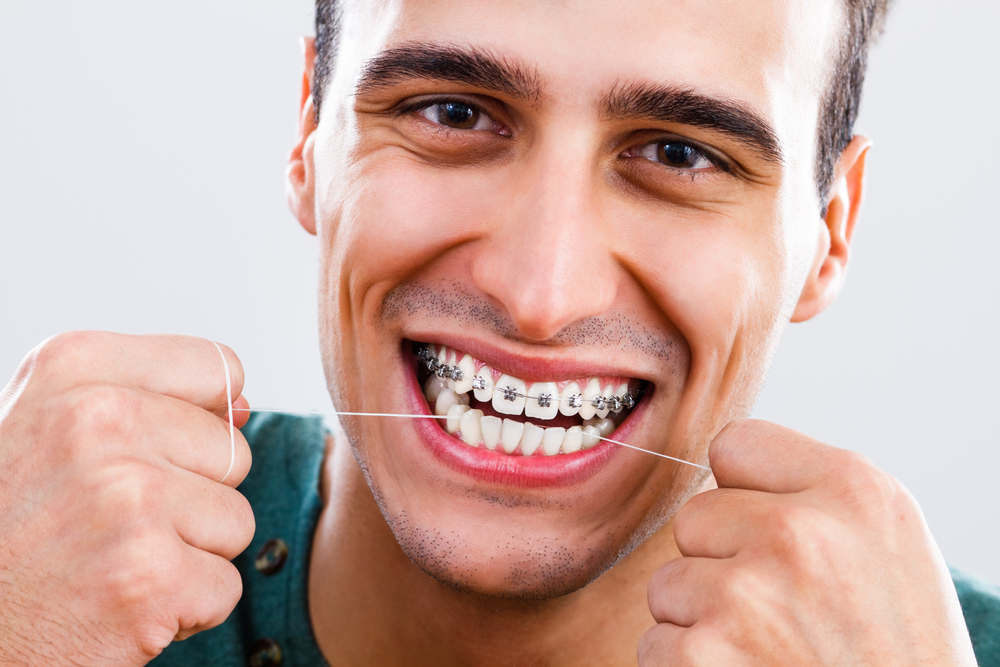Johnson Orthodontics Fundamentals Explained
Johnson Orthodontics Fundamentals Explained
Blog Article
The smart Trick of Johnson Orthodontics That Nobody is Talking About
Table of ContentsJohnson Orthodontics for DummiesThe Best Guide To Johnson OrthodonticsJohnson Orthodontics - An OverviewRumored Buzz on Johnson OrthodonticsThe Best Guide To Johnson OrthodonticsNot known Factual Statements About Johnson Orthodontics An Unbiased View of Johnson Orthodontics
An orthodontist is a dentist educated to detect, protect against, and deal with teeth and jaw abnormalities. They fix existing problems and are trained to recognize troubles that may develop in the future. Orthodontists deal with people of all ages, from kids to adults. People often associate a best smile with health., however not all dental professionals are orthodontists. They concentrate on two locations: How to correctly and securely move teeth Exactly how to correctly lead growth in the teeth, jaw, and faceOnce an orthodontist has finished training, they have the option to end up being board accredited.
The Only Guide to Johnson Orthodontics
Malocclusion leads to tooth overcrowding, an askew jaw, or uneven bite patterns. Malocclusion is generally treated with: Your orthodontist affixes metal, ceramic, or plastic square bonds to your teeth.
Some people need a headgear to assist relocate teeth right into line with pressure from outside the mouth. A retainer is a custom-made tool that keeps your teeth in location.

They're most usually used on children. They can create extra space in the mouth without needing to draw teeth. If you have a serious underbite or overbite, you may need orthognathic surgical procedure (also called orthodontic surgical procedure) to extend or reduce your jaw. Orthodontists utilize cords, surgical screws, or plates to sustain your jaw bone.
Johnson Orthodontics Fundamentals Explained
Throughout your first orthodontic appointment, you'll likely have: A dental examPhotos taken of your face and smileDental X-raysPanoramic (360 degree) X-rays of your face and headImpressions to create molds of your teethThese examinations will assist your orthodontist recognize just how to wage your therapy. An orthodontist is a dental practitioner that's had training to treat your teeth and jaw.
An orthodontist is focused on your bite, so something like a damaged tooth would be handled by a dental practitioner. Orthodontists are focused on your bite, or the way your teeth fit with each other, and the straightness of your teeth.
Ever before questioned how celebrities constantly appear to have completely straightened teeth? The response usually lies in the knowledgeable hands of an orthodontist. What specifically does an orthodontist do? Orthodontists are oral professionals who concentrate on fixing abnormalities in the teeth and jaws. Their experience exceeds simply developing a beautiful smile; it extends to improving your general oral health and wellness and feature.
What Does Johnson Orthodontics Mean?

Clear aligners, like Invisalign, are a preferred alternative for individuals seeking a more very discreet therapy choice. These detachable trays are tailor-made to gradually move the teeth's placement (https://www.artstation.com/jerrystafford7/profile). Headgear might be used along with braces or aligners to apply additional targeted forces, specifically for correcting jaw discrepancies. In cases of narrow jaws, palatal expanders can be used to create room for appropriate tooth placement.
The 8-Second Trick For Johnson Orthodontics
While accomplishing a gorgeous smile is a natural perk of orthodontic treatment, the benefits prolong much beyond aesthetics. Appropriately lined up teeth and a balanced bite add to enhanced dental health in a number of ways: Straight teeth are much easier to clean, which helps prevent dental special info caries and periodontal condition. An appropriate bite enables efficient chewing, which helps in food digestion and general digestive tract wellness.
What is the difference in between a dentist and an orthodontist? All dentists, consisting of orthodontists, deal with the teeth, periodontals, jaw and nerves.
Orthodontists and dental professionals both offer oral look after people. Orthodontists can operate in a dental workplace and use the very same therapies as other dental experts. You can believe of both doctors that deal with gum and teeth troubles. The major distinction is that coming to be an orthodontist calls for a specific specialty in dealing with the imbalance of the teeth and jaw.
Excitement About Johnson Orthodontics
An orthodontist is a dentist that has undertaken training to focus on the diagnosis, prevention and treatment of irregularities in the jaw and teeth. Their training includes remedying these existing conditions (orthodontics). They can also determine possible issues in teeth placement that might create when problems are left without treatment. Orthodontists can aid people of any ages.
This consists of all the necessary education and learning to become a general dental professional. According to the American Trainee Dental Association (ASDA), it indicates you will certainly need to have either a Doctor of Medication in Dentistry (DMD) or a Medical Professional of Oral Surgery (DDS). Simply put, orthodontists need to complete dental institution and after that get an orthodontics specialty education and learning.
Not known Facts About Johnson Orthodontics

When you have a healthy bite, you can speak, chew and eat appropriately, hence improving your lifestyle. Other than the orthodontist, we usually see assistants collaborating with these oral professionals in their clinics. What is an orthodontist aide called? They're appropriately called orthodontic aides. They are specialized aides, and are trained to manage oral gear and provide preventative oral health care.
Report this page